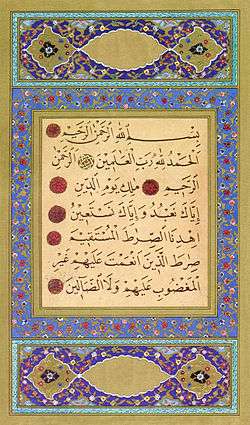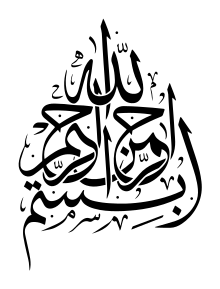Naskh (script)

 |
| Part of a series on |
| Islamic culture |
|---|
| Architecture |
| Art |
| Dress |
| Holidays |
| Literature |
| Music |
| Theatre |
|
Naskh (Arabic: نسخ nasḫ/nasḵ; also known as Naskhi or by its Turkish name Nesih) is a specific style of the Arabic alphabet. The root of this Arabic term nasakh-a (نسخ) means "to copy". It either refers to the fact that it replaced its predecessor, Kufic script, or that this style allows faster copying of texts.
This type of script was derived from Thuluth by introducing a number of modifications resulting in smaller size and greater delicacy. It is written using a small, very fine pen known as a cava pen, which makes the script eminently suitable for use in book production. Naskhi was used in copying Qur'ans,[1] Delails, En-ams and Hadiths. It was also used in commentaries on the Qur'an (Tafsir) and in collections of poetry (diwan). It was and is a very widely used form of script.
With major simplifications, such as reduction of script rules and forced horizontal alignment, this is the style most commonly used for printing Arabic, Persian, Pashto and Sindhi languages and for representations of the Arabic alphabet by computer fonts. Naskh, along with Ta'liq, notably also gave rise to Nasta'līq, the style of script used for writing Urdu, Persian, Punjabi, Kashmiri, and sometimes Pashto and Uyghur.
See also
- Ruqʿah (the cursive Arabic handwriting)
- Nastaliq
- Arabic, Urdu, other Arabic keyboard layouts
- National Language Authority
- taʿlīq script
References
- ↑ "Qur'an Carpet Page; al-Fatihah". World Digital Library. Retrieved 28 February 2013.
External links
| Wikimedia Commons has media related to Naskh. |
